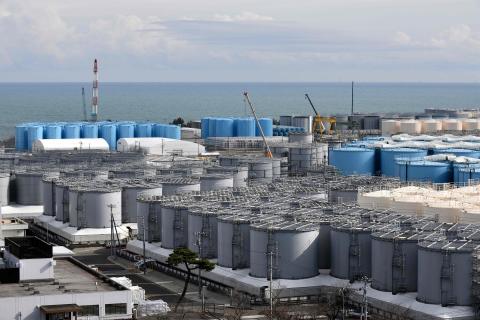Nine years on, state of the clean-up at Fukushima's nuclear plant

Nine years after a devastating tsunami sparked disaster at the Fukushima Daiichi nuclear plant, clean-up and decommissioning continues at the crippled facility.
AFP was granted rare access to reactor control rooms and other parts of the plant for an update in the months before the Tokyo Olympics.
Seen from afar, the buildings housing reactors one to four, the most damaged of the six at the site, seem to have been almost fully repaired.
Three of them were ravaged by hydrogen explosions. But up close the damage is clear, with walls missing and debris still on the ground.
Those entering the control rooms must wear clothing designated for the "yellow zone" - protective suit, three pairs of gloves, three pairs of socks, boots, a full face mask and a helmet.
These don't protect against radiation, which passes through clothing, but are intended to limit radioactive dust entering the body or contaminating clothes.
The route to the rooms involves stepping over detritus from the disaster and squeezing along improvised staircases.
The khaki green control equipment, dating back to the 1970s, is still in the room, though long rendered unusable by the disaster.
On the wall scribbled calculations remain - the desperate attempts of technicians in a room that had been plunged into darkness to work out how to save the plant. But there was nothing they could do to stop reactors one, two and three from melting down.
The molten fuel remains in the bottom of the reactors, so far only accessed by robots. The extremely delicate task of removing it will not be tested at full-scale until 2021, with the end of the process not expected before 2040 or 2050 at best.
Groundwater from the...
- Log in to post comments
